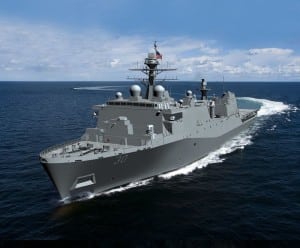
The Commandant of the Marine Corps on Thursday said he thinks the next major L-class amphibious ships will likely be smaller and be partially built around interacting with unmanned systems. Speaking during a Hudson Institute event on July 7, Gen. David Berger was asked about how experimentation in the Indo-Pacific is informing the next main L-class amphibious warship after the San Antonio-class LPD-17 Flight II. He started by noting the first step is working on the smaller Light Amphibious Warship…

 By
By 











